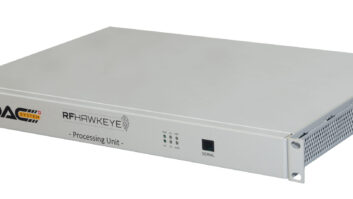I previously reviewed how to decide if an old transmitter was worth fixing. I’ll assume you’ve decided the transmitter is worth the time and effort; so let’s get started.
Since we’re discussing an “old” transmitter, my assumption is that it’s a tube-type and like any other transmitter, it has three main systems:
- The power supply — tube transmitters require at least two, and often three, separate power supplies, in addition to filament (or heater) voltage.
- The control logic — the control logic is used to operate the tube in a fashion consistent with the tube designer’s intentions. Operator safety factors are included.
- Power amplifier — the main considerations here are the input and output RF circuits.
We’re going to work our way from the bottom up in this series of articles.
THE POWER SUPPLY

Due to the inherently dangerous nature of high-voltage power supplies, I want to state unequivocally: Do not work on high-voltage power supplies when you are alone or tired. It’s simply too easy to make a mistake. Take every precaution you can think of, and do it twice (or more).
Several things happen to high-voltage power supplies as they age:
- They get very dirty, at the very least, by attracting and accumulating fine particulate matter on high-voltage wiring and insulators.
- High-voltage filter capacitors can fail because of internal short circuits, which are often not detectable except by the application of high-voltage.
- Transformers and chokes can sometimes fail, either by winding-to-frame shorts, or winding-to-winding shorts. Often these shorts are not detectable except by the application of high-voltage.
Several decades ago, I rebuilt an old RCA 1 kW FM transmitter (even then it was old), which had been inhabited by rodents for quite some time. To say this transmitter was filthy is an understatement; but I grabbed rubber gloves and completely disassembled the power supply deck, all the way down to the plate that held the components in the bottom. Every component of the supply was thoroughly scrubbed.
When I reassembled the power supply section, I was naturally faced with the requirement to test it. Did I want to just re-connect the AC power going in (240 VAC single-phase) to see what would happen? Well, no.
I decided to test it out in the following manner:
The power supply deck was completely reassembled in the bottom of the transmitter cabinet.
The load side was left safely disconnected — in other words, the HV lead to the tube deck was not reconnected.
With an ohmmeter I tested for obvious short-circuits. There were none.
I obtained a variac and connected it between a 120 VAC feed, and the input to the power supply (downstream from the HV contactor and right into the plate transformer primary).
I then ran the input voltage up from zero to 120 V to see if the supply generated DC high-voltage, which it did. I used its plate voltage meter as an indicator.
Even though the initial test was only at half of the normal input voltage, the fact that I easily generated 1100 VDC convinced me that I re-assembled everything correctly. The next step was to go back to the 240 VAC feed and the power supply was fine at that voltage as well.
You could do this same thing with a three-phase power supply. Again, use an ohmmeter to test for obvious shorts first. Before you go on to the variac test, make sure you’ve fused its output at a safe level — so that any arcing encountered will blow the fuse. Also, safely isolate the plate transformer leads that are not under test — they’ll still be energized.
My point here is that when you’ve torn a power supply deck all the way down and then reassembled it, it pays to test your work in a manner that will discover errors without blowing the circuit breaker off of the wall.
Next time: the control logic.












